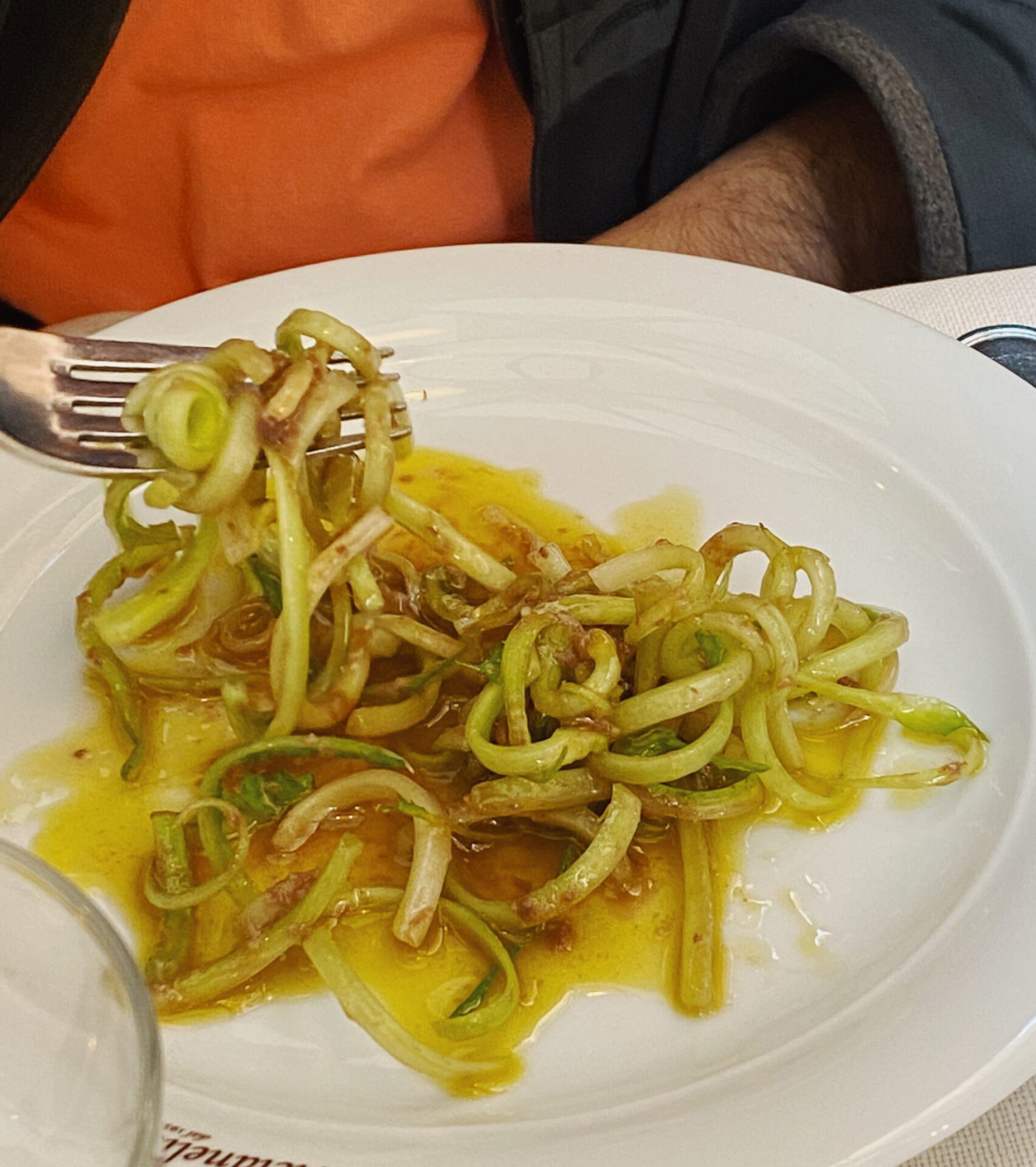Roman carb-heavy and cheese-plenty dishes such as carbonara, cacio e pepe, and supplì have quite the worldwide reputation, but the city also treasures a vast variety of lighter and lesser-known culinary delights centered around vegetables: artichokes, stuffed or fried, romanesco broccoli, and, as November rolls around, the wacky-looking puntarelle.
From late autumn through February, the vegetable is on every Roman’s mind and in every Roman’s stomach—and for good reason. Translating to “little points”, puntarelle are the crispy, crunchy, and remarkably fresh stalks of the Catalonia chicory, a loose-leafed variation with spiky foliage reminiscent of dandelion greens. They are grown in abundance in the countryside around Rome—so much so that the region of Lazio proudly pronounced them one of the 341 traditional Italian foods, eaten, as it turns out, since antiquity. Both Ovid and Pliny give mention to the vegetable for its outstandingly positive health benefits (it’s high in vitamin A, vitamin C, calcium, potassium, and phosphorus). The Emperor Caesar’s salad of choice, therefore, was not the mayonnaise-filled mess topped with fried croutons that has now taken his name in vain. Instead, he and the people of Ancient Rome opted for puntarelle and dressed it with garum, fermented fish sauce. Before snubbing your nose at the notion of such a condiment, let’s give these folks of yesteryear some credit—their recipe in the making was the forerunner to the salad of today, a trattoria top-seller, that gives fame and fortune to this fabulous stalk. I am talking, of course, about puntarelle alla Romana, otherwise referred to as puntarelle in salsa di alici.
Do as the Romans do and cut them thin so that they curl up on themselves, before tossing the vitamin-rich greens in a dressing of olive oil, red wine vinegar, and a puree of garlic and anchovies. The sweet saltiness of the sauce softens the bitter bite of the greens, while the light dressing preserves the stalks’ crunch.
As with all good things in life, however, there is a catch: preparing the stalks is a fiddly process. If you plan to make puntarelle more than once, it’s worth picking up a taglia puntarelle—a small, cross-hatched wire tool through which you pull the stalks into thin, uniform strips. For those in fret, fear not; the Roman markets are well stocked up with pre-prepped, curl-ready puntarelle.
IN CUCINA: PUNTARELLE ALLA ROMANA
Serves 4
INGREDIENTS
- 8 oz puntarelle
- 4 anchovies
- 1 garlic clove, minced
- 4 tbsp extra virgin olive oil
- 2 tbsp red wine vinegar
- Salt, to taste
- Pepper, to taste
PREPARATION
- Tear away the puntarelle’s dark leaves, strip apart the stalks, and cut the stems into thin slivers, using a taglia puntarelle if you have one. (Skip this step if you’ve purchased pre-prepped puntarelle.)
- Place the cut stems into a bath of ice and water. Leave to soak for an hour or so and watch as the shoots begin to curl.
- Meanwhile, puree the garlic and anchovies with olive oil, vinegar, salt, and pepper.
- Drain the puntarelle and dry well, being careful not to break or crush them.
- Toss the puntarelle with the dressing and serve.



